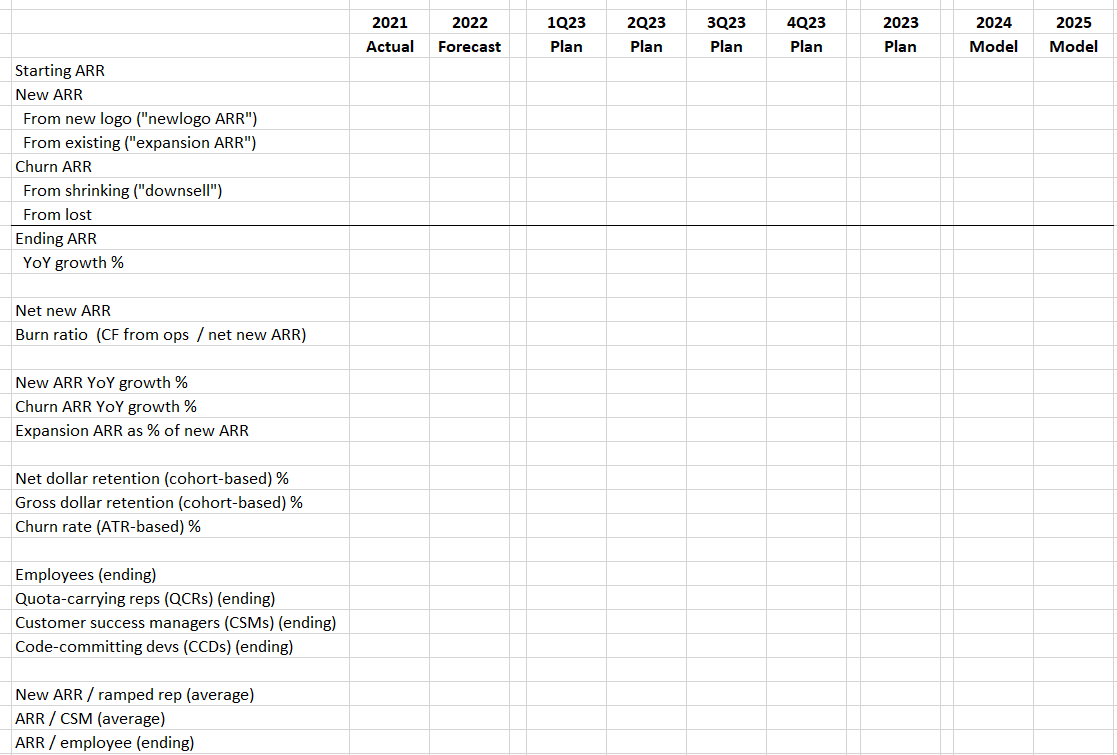Effective Strategies for Presenting Operating Plans to Boards
Conceitos essenciais
Presenting operating plans to boards requires strategic context, financial context, and a clear trajectory for future years to ensure alignment and understanding among board members.
Resumo
When presenting an operating plan to a board, it is crucial to provide strategic context, financial context, and a clear trajectory for future years. The presentation should focus on key metrics such as ARR leaky bucket analysis, P&L details, productivity measures, and scenario comparisons. By offering concise and informative slides that cover essential aspects of the plan while addressing potential challenges and strategic considerations, CEOs can effectively communicate their vision to the board.
How to Present an Operating Plan to your Board
Estatísticas
"One year of history. This year that’s 2021."
"One year of forecast. This year that’s your 2022 forecast, which is your first through third quarter actuals combined with your fourth-quarter forecast."
"The proposed operating plan (2023)."
"The trajectory on which the proposed operating plan puts you for the next two years after that (i.e., 2024 and 2025)."
"Total employees, at end of period."
Citações
"Strategic context isn’t the only context that’s typically missing. A good operating plan should present financial context as well."
"Your typical VC board member might sit on 8-10 boards, a typical independent on 2 (if they’re still in an operating role), and a professional independent might sit on 3-5."
"The best way to prevent that is to show the 2024 model teed up by the proposed 2023 plan."
Principais Insights Extraídos De
by Dave Kellogg às kellblog.com 11-23-2022
https://kellblog.com/2022/11/23/how-to-present-an-operating-plan-to-your-board/
Perguntas Mais Profundas
How can segment analysis be incorporated into a concise operating plan presentation?
Segment analysis can be effectively incorporated into a concise operating plan presentation by dedicating specific sections to each business segment within the company. By breaking down the overall performance metrics and financial data by segments such as self-serve motion, enterprise motion, or any other relevant categorization, the presentation can provide a more detailed and insightful view of how different parts of the business are performing. This allows board members to understand the nuances and variations in performance across various segments, enabling them to make informed decisions based on segment-specific insights. Including key metrics related to each segment's revenue, growth rate, customer acquisition costs (CAC), retention rates, and profitability will help paint a comprehensive picture of the company's overall health.
What are the potential drawbacks of using a hybrid format for presenting scenarios in an operating plan?
While using a hybrid format for presenting scenarios in an operating plan offers several benefits such as clarity and comparability between different options, there are potential drawbacks that need to be considered. One drawback is that condensing multiple scenarios into one slide may oversimplify complex strategic decisions that require deeper analysis and discussion. Board members might not get a full understanding of the trade-offs involved in each scenario if presented too succinctly. Additionally, focusing solely on high-level numbers without delving into underlying assumptions or risks associated with each scenario could lead to misinterpretation or overlooking critical details. It's essential to strike a balance between brevity and depth when utilizing a hybrid format for scenario presentations.
How can zero-based budgeting enhance the effectiveness of presenting an operating plan to a board?
Zero-based budgeting can significantly enhance the effectiveness of presenting an operating plan to a board by instilling discipline in cost management practices and ensuring thorough scrutiny of expenses. By requiring every expense item to be justified from scratch rather than simply relying on incremental adjustments from previous budgets, zero-based budgeting forces management teams to reevaluate their spending priorities based on current needs and strategic objectives. When incorporating zero-based budgeting into an operating plan presentation, boards gain confidence knowing that expenses have been rigorously reviewed and aligned with organizational goals. This approach also encourages transparency around resource allocation decisions and promotes accountability throughout the organization by fostering responsible financial stewardship at all levels.
0
